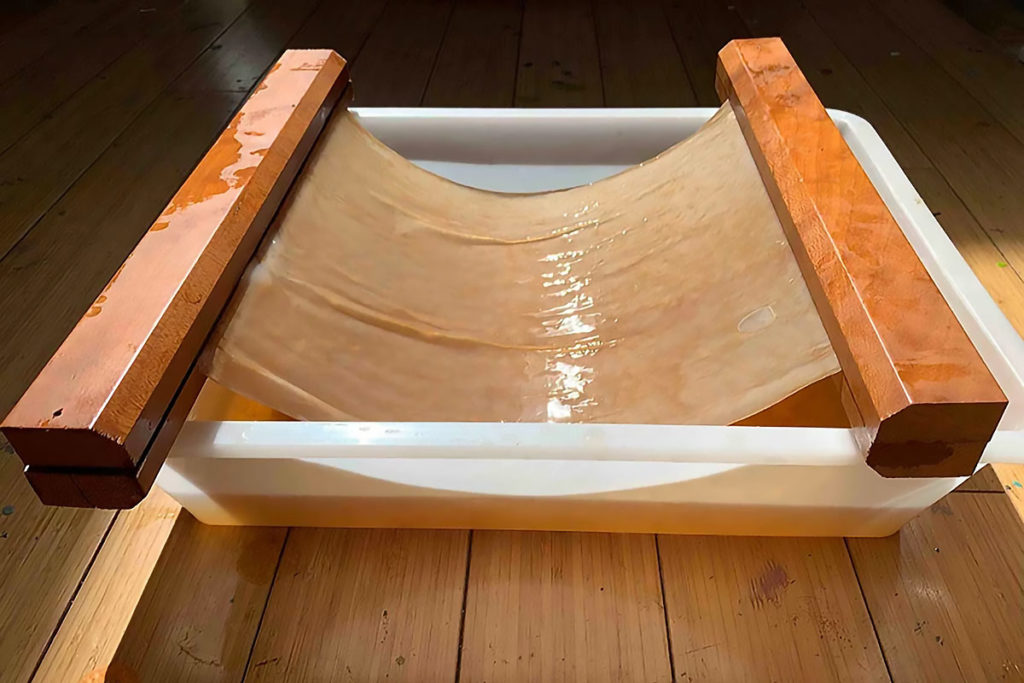Two designers have developed a prototype face mask that uses an alternative material that, unless you are a bio scientist, you never would have imagine it being used as a face mask material.
Created by Garrett Benisch and Elizabeth Bridges of Sum Studio, Xylinum mask, as it is called, is made of bacterial cellulose – a by-product of a common bacteria xylinum acetobacter.

I know, right? It sounds absolutely bonkers. What’s even more crazy is, you can actually make one at home using simple ingredients in your kitchen.
According to Fast Company, the duo said all you need is water, tea, sugar, and a small bacterial sample of xylinum acetobacter found in ingredients like unflavored kombucha.
The cellulose sheet is the result of bacterial multiplying on the surface of the water it dwells on.

Apparently, if you were to look under a microscope, this thin sheet of bacteria cellulose is of a tight knit of cellulose fibers that provide the barrier against virus particles.
However, since being tight knitted, it means breathability will be an issue. It is an interesting proposition and one that may alleviate the current waste issue with single-use masks.
For starter, Xylinum mask is reusable and when it is time to ditch it, it will break down as easily as household vegetables. Plus, the material is translucent, which means it is more social-friendly as people can see the smile and read the lips of the wearer. The latter is especially useful for those hard of hearing.
In the area of breathability, Benisch and Bridges said wax particles introduced into the bacteria’s growth surface can improve the breathability (after the wax has melted away).
However, it is worthy to note that this type of biomask has not been tested and proven to be effective. In case you are interested in experimenting with this bio material, there is actually a step-by-step guide HERE.
Images: Sum Studio.
Source: Fast Company.






